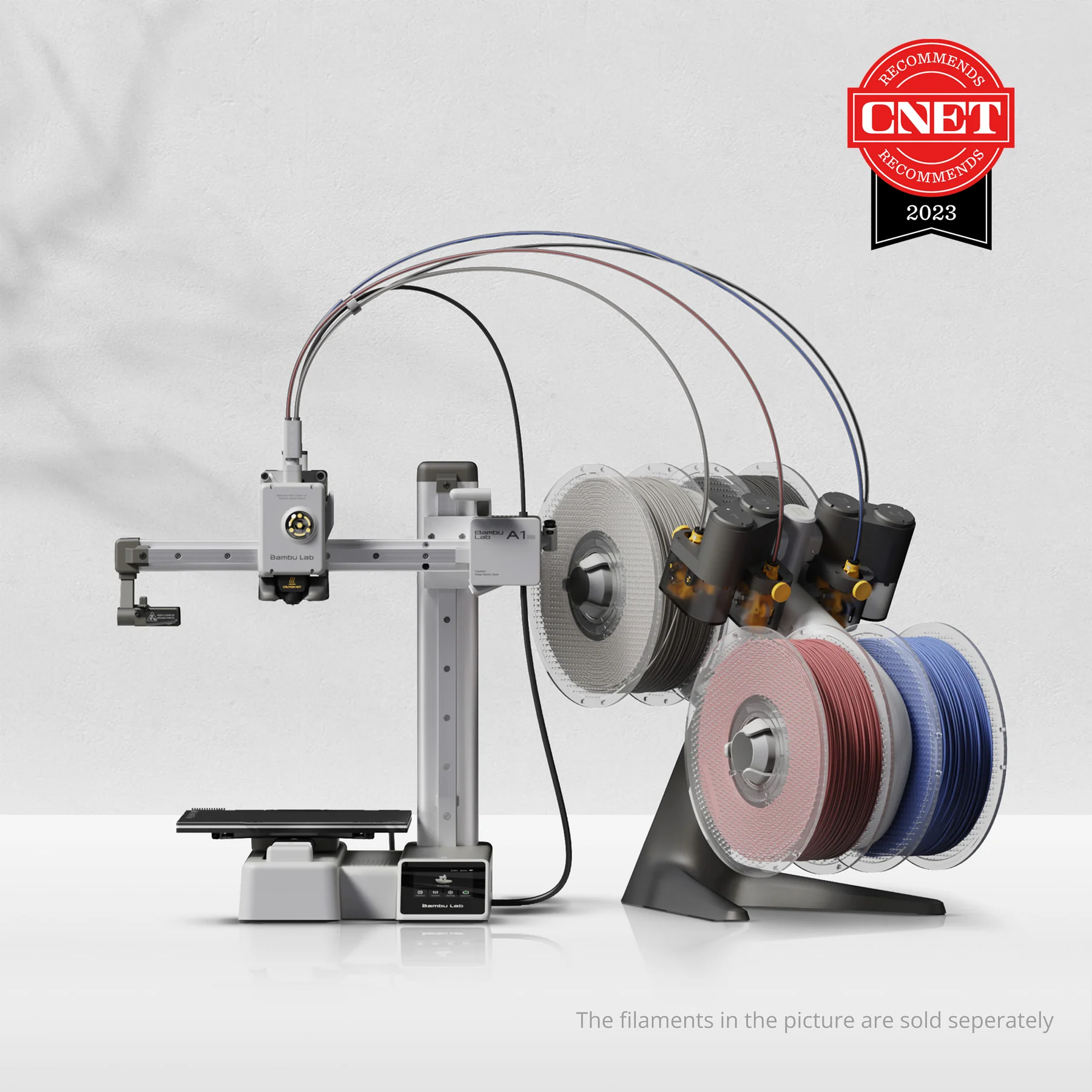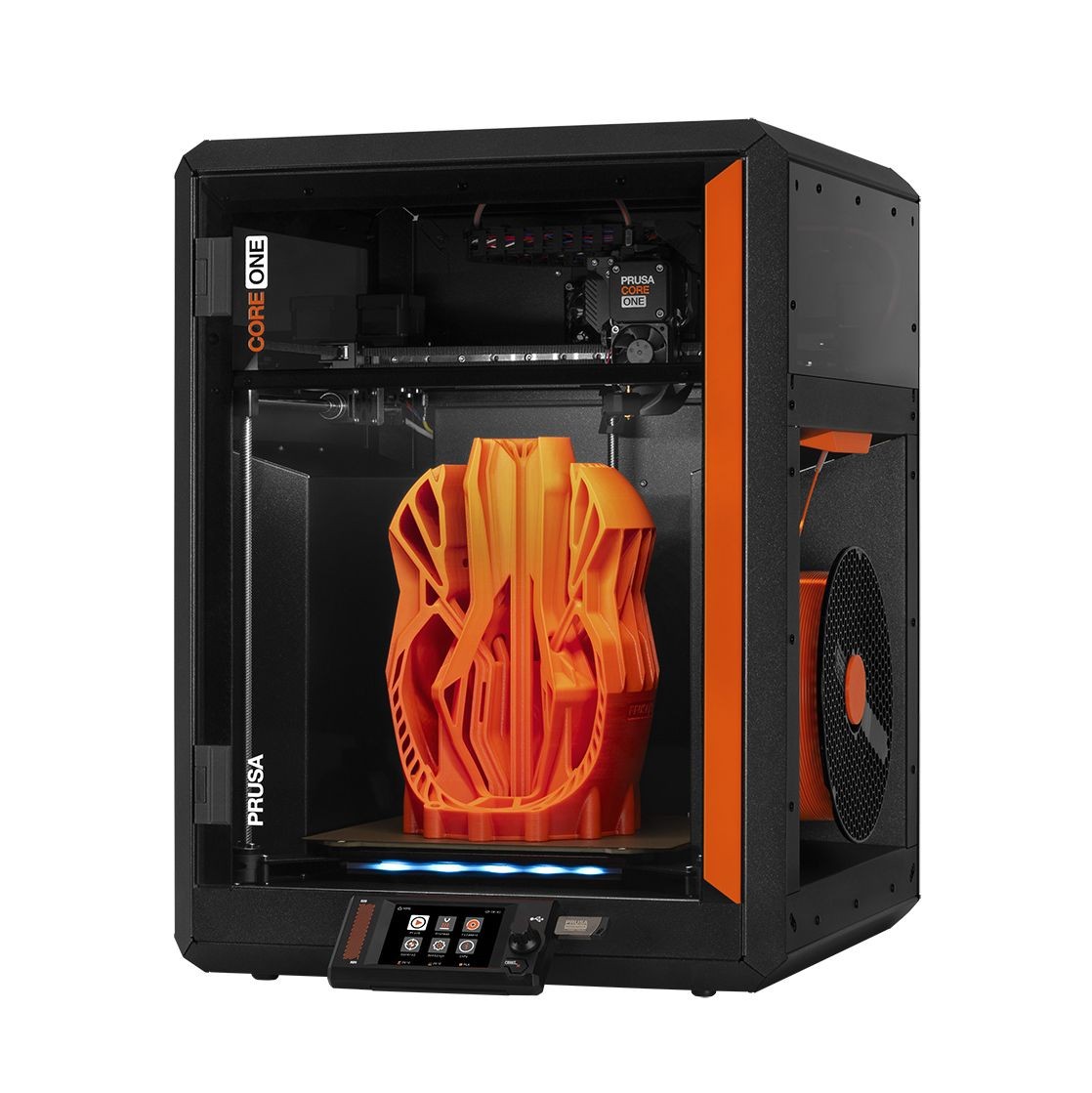Compare A1 Mini vs Core One
Comparison between the best 3D printers
Choose the best 3D printer at the best price. The cheapest 3D printers are here.
Buy a 3D printer here with 3D Fila.
 |
 |
|
| Model | A1 Mini |
Core One |
| Printing Material | Filament | Filament |
| Buy Filament for Bambu Lab A1 Mini | Buy Filament forPrusa Core One | |
| Estimated price | $549,00 | $1200,00 |
| Manufacturer | Bambu Lab | Prusa |
| Release Year | 2023 | 2025 |
| Print Volume [mm] | 180x180x180 | 250x220x270 |
| Printer Size [mm] | 315x347x365 | 385x340x620 |
| Weight [kg] | 5,5 | 14 |
| Power Loss Recovery | YES | YES |
| Enclosed printer | NO | YES |
| Bed Leveling | Automatic | Automatic |
| Filament End Sensor | YES | YES |
| Bed type | Heated | Heated |
| Power supply system | Direct Drive | Direct Drive |
| Standard nozzle | 0,4 | 0,4 |
| Maximum Nozzle Temperature [°C] | 300 | 300 |
| Maximum Bed Temperature [°C] | 80 | 120 |
| Maximum printing speed [mm/s] | 500 | 500 |
| Filament holder | YES | YES |
| Camera for supervision | YES | YES |
| Recommended filaments | PLA, PETG, TPU, PVA | PLA, TPU, TPE, HIPS, ABS, PETG, WOOD, PC, PA, PVA, ASA |
| Recommended slicers | Bambu Studio, Super Slicer, Cura, Prusa Slicer, Orca | Cura, Prusa Slicer, Orca |
| Maximum Resolution [mm] | 0,1 | 0,01 |
| Processor | 32-bit Silenciosa | xBuddy 32 bit |
| Display | Touchscreen 2,4'' | Touchscreen 3,5'' |
| Power Supply | 150 W | 240 W |
| Connectivity | Wifi, Bambu bus, Cartão SD | SD |
| Operating systems | Windows, Linux, Macbook | Windows, Linux e Macbook |
| Date of registration in the system | 2024-04-10 | 2024-11-27 |
| Release date | 2023 | 2025 |
| Extra features | The Bambu Lab A1 Mini stands out not only for its impressive speed and automatic calibration, but also for its multi-color printing capability thanks to AMS Lite. This innovative system makes multi-color printing easy, making it accessible to everyone. AMS Lite, specific to the A1 Mini, supports up to four different materials simultaneously, providing creative freedom without complications. With comprehensive sensors for energy monitoring and recovery, a camera for timelapses and Wi-Fi control, the A1 Mini and AMS Lite together offer an intuitive and advanced 3D printing experience, ideal for materials such as PLA, PETG and TPU, and designed for simplicity and fast maintenance with quick-change nozzles. | The Prusa Core One is a CoreXY 3D printer featuring a robust steel frame, a 3.5" touchscreen, and a heated chamber for technical filaments. It offers 360° cooling for improved print quality and supports upgrades from the MK4S model. With a compact design, a print volume of 270x250x220 mm, and compatibility with the MMU3 for multi-color printing, it stands out for its ease of maintenance, precision, and speeds up to 260% faster than the MK3S+. |
| Support for multiple colors and materials (AMS and CFS) | YES | YES |
Notes * |
||
| Cost-benefit | 7 / 10 | 7 / 10 |
| Hardware | 4.8 / 10 | 6 / 10 |
| Tela | . | . |
| Print volume | 3 / 10 | 3 / 10 |
| Performance | 4 / 10 | 4 / 10 |
Conclusion |
| In evaluating the Bambu Lab A1 Mini and the Prusa Core One, several key factors emerge that help delineate their respective strengths and applications, despite both being solid choices in the 3D printing market. The Bambu Lab A1 Mini is an entry-level 3D printer that emphasizes speed, ease of use, and innovative features such as the AMS Lite for multi-color printing. Its compact design makes it suitable for home users or hobbyists who prioritize convenience and quick setup. With a maximum resolution of 0.1 mm, it offers good print quality for basic materials like PLA and PETG but may be limited in terms of print volume compared to higher-end models. The inclusion of features like automatic bed leveling and power loss recovery enhances user experience, positioning it as an accessible option for beginners. In contrast, the Prusa Core One is designed for more advanced users who require higher precision and additional features. It boasts a larger print volume and an enclosed design that allows for better thermal management, which is essential for printing with a wider range of technical materials like ABS and Nylon. With its robust steel frame and 360° cooling capabilities, it ensures improved print quality and stability during longer, more complex print jobs. The Prusa’s higher resolution capabilities and support for upgrades further justify its stability as a reliable workhorse for serious enthusiasts and professionals. When considering cost-benefit ratios, both printers offer a similar score, suggesting that each may provide value relative to its intended use case. However, differences in their price points make it evident that the A1 Mini is targeted more toward those who seek affordability and straightforward functionality, while the Core One appeals to users willing to invest more for advanced capabilities and versatility. Ultimately, the choice between the two hinges on the user's specific needs—whether the priority is for ease of use and speed with the A1 Mini or enhanced print versatility and quality with the Prusa Core One. Each printer holds its own niche within the 3D printing landscape, catering to different user requirements effectively. |

